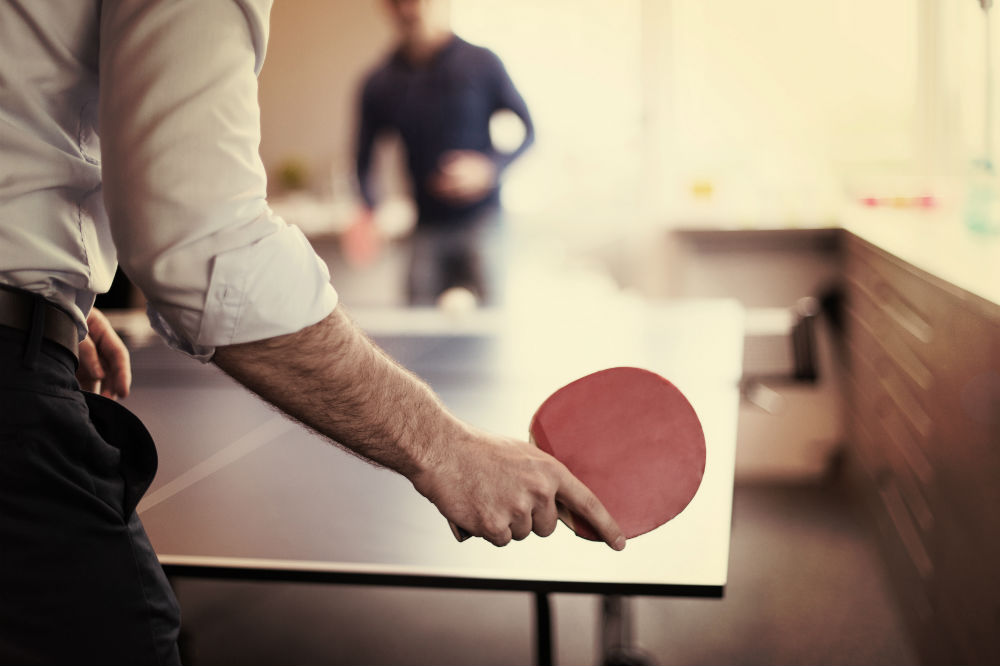
How to Increase the Spin of a Table Tennis Bat
It takes a few steps before you can use your preferred technique to get that perfect spin on your serve. Here are a few tips for how to increase spin of your table tennis bat both in and out of the game.
Looking After Your Bat
As you play, dirt, grime, and dust naturally collect on the rubbers of your bat. These elements will usually make it more difficult to grip and can cause your aim to be off. The ball will slip and slide across the rubber, making it more challenging to generate spin.
Cleaning
Luckily, cleaning a bat requires little on your part; all you need is a little water to loosen to the muck and then a soft cloth to wipe it clean.
With some vigorous rubbing, you’ll remove most, if not all, the dirt that affects your performance. Be wary of using too much water; this can soak the rubber and reach the blades, causing damage.
For the more persistent dirt, consider using a sponge and some biological spray to get a deep clean. There are some reasonably cheap sprays out there.
The IMPACT Bat Cleaning set, Joola Turbo Cleaner, and Bribar Hydro Table Tennis Bat Cleaning Set are all common choices.
Protection
Now that your bats are clean, it’s best to get some protection so that they stay that way. Getting a bat case protects the rubber from collecting dust when you aren’t playing or practicing.
It keeps them safe and out of harm’s way, perfect as the rubber on your bat are prone to scratches, which can lead to damage if left unchecked.
The type of case you use is not as important; all you need is one that protects your gear. While a case is more than necessary, some players opt to go the extra mile in protecting their bats and get rubber protectors.
These transparent films allow you to cut to match the shape of the rubber, which keeps dust and dirt from collecting on the rubber itself. These give you a 100% guarantee that your bats will be clean for when you next use them.
All bats are subject to wear and tear. Your rubber will start to lose grip and may even be fraying at the edges. To make sure you keep this grip, many players use oil lightly brushed across the rubber to keep the grip intact.
Sunflower oil is a cheap option that you can find in almost anyone’s kitchen. Take a small or medium brush, dip it in, and spread the oil on your rubbers, making sure you cover the whole surface.
Leave it to dry for about 30 minutes so that the oil soaks in, and repeat 3 to 5 times.
Looking after your bats and rubber means you can perform at peak performance, and it allows your bats to grip the ball and easily increase spin.

Practicing Your Spins
Now that your bat is clean and taken care of, you can get into actually practicing your spin serves. The most basic and most straightforward type to get the hang of is the backspin.
The Backspin
There are two movements that you’ll need to learn and practice to master backspinning: the wrist flicking or rotating, and the brushing of the ball.
Brushing is perhaps the more important of the two, as it controls the contact and therefore creates the spin, with the wrist controlling the strength of the spin.
You’ll want to make contact with the ball by lightly brushing it from below, not full-on hitting it.
You’re aiming to contact the ball at an almost 10° angle, making contact on the front side of your bat.
It is this movement that creates spin, and it’s easy to tell if you’re doing it correctly; should the ball either stop once it’s bounced a few times on the table, or even come back to you, you’ve created spin. Adding the wrist movement after learning the brushing of the ball will then allow you to control the degree of the spin.
As you brush the ball, experiment with accelerating, rotating, and flicking the wrist as you make contact with the ball. Doing so can help with finding the right technique to learn how to get the right spin you want.
Remember to watch the ball and how it’s reacting on the table to your manipulation. Doing so will help you master the backspin.
The Sidespin
The sidespin is not very different from the backspin, once you’ve got the basics down. Stick with the core concept of the brushing and wrist movements, but tilt the bat down with the handle moving up.
Your goal is to keep this angle through the swing, without curling the bat. This simple adjustment allows you to control the direction of the spin.
Just as there was an easy way to measure and test your backspins, you need to set targets for yourself.
Getting two cones and placing them slightly behind each other with space in between gives you a mark to try and spin the ball through.
Experiment with various angles and strengths as you try and aim to create enough sidespin to pass between the cones. Again, watch to see how the ball reacts and adjust as needed.
